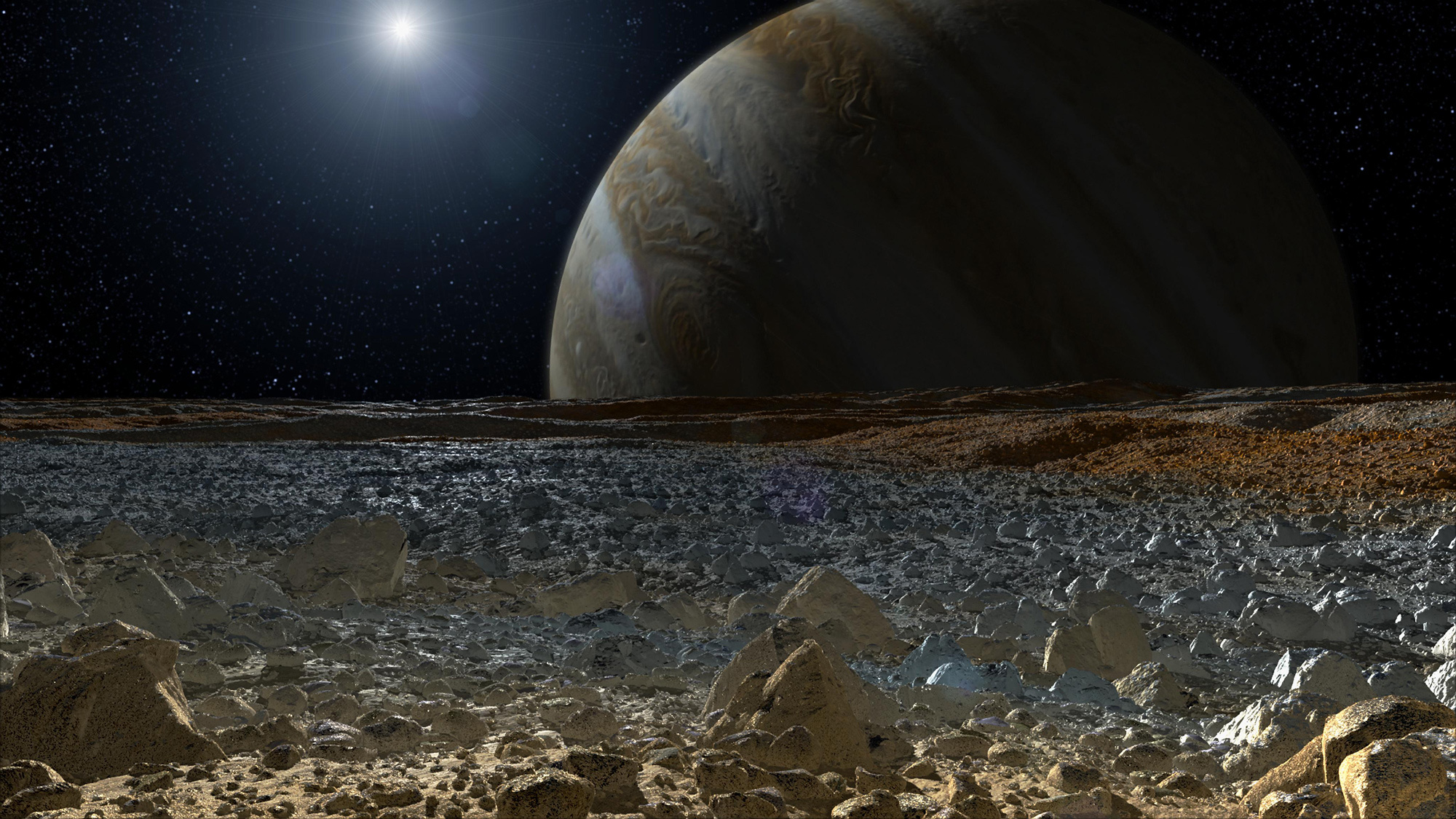Does Jupiter's Moon Europa Have a Subsurface Ocean? Here's What We Know

NASA will hold a briefing today (Sept. 26) on new findings about "activity that may be related to the presence of a subsurface ocean on Europa." Jupiter's moon Europa is often touted as a possible abode for life, because of the potential liquid water ocean beneath its icy surface. But how much do we know about Europa, really?
There is a lot of indirect evidence for a liquid ocean of some sort, said Cynthia Phillips, a Europa project staff scientist at the Jet Propulsion Laboratory. You can follow NASA's Europa briefing here beginning at 2 p.m. EDT (1800 GMT).
"We're almost certain one is there," she told Space.com. "One clue was the mass of Europa. Combined with when we measure the density, we get a figure close to one [gram per cubic centimeter] and water is the only material like that." [Does Europa Have 2X Earth's Liquid Water? Very Likely! (NASA Video)]
Another big indicator was the way Europa interacted with Jupiter's magnetic field, as measured by the Galileo probe, which explored Jupiter in the 1990s.
"The way we know some is liquid was [the probe's] magnetometer," Phillips said. "As [Europa] goes through Jupiter's field the magnetometer saw deflection exactly where you would expect if there were an induced field."

The only way to get such an induced field is if there's some substance that is globally connected, and conductive — and only salty water fits the bill. Phillips noted you wouldn't get the same readings with isolated pools of water, like what's found under ice sheets on Earth. Slushy water-ice mixtures don't work, either. "Maybe graphite could get you that, but that would be ridiculous." she said, given what scientists know about how planets formed in that part of the solar system.
The Europan surface also offers evidence for liquid-water oceans. First, spectroscopic measurements have showed that the surface is covered in water ice, and that it is smoother than a cue ball. "None of the topography is more than a couple of hundred meters tall," Philips said. That doesn't mean it's flat like a tabletop or frozen lake, though — it's actually quite chaotic and rough, at least at small scales. At the same time, the surface lacks impact craters. Phillips noted that given the rate of cratering on all the surrounding moons, Europa's surface doesn't look like it is more than 50 million years old. That means there is some way the planet is getting resurfaced relatively often. If the moon were covered with ice and had only a rock layer underneath it, you'd expect a much older-appearing surface.
Get the Space.com Newsletter
Breaking space news, the latest updates on rocket launches, skywatching events and more!
What few craters astronomers have found show that the ice surface is at least a few miles thick, because some craters have central peaks and there's a minimum thickness necessary to support those, Phillips said. A big question is exactly how thick the ice is and how thick the liquid layer is. Most estimates, Phillips said, are from 80 to 170 kilometers (50 to 100 miles) of water topped with several kilometers of ice.
Phillips added that even though there's lots of indirect evidence for the moon's subsurface ocean, direct evidence is lacking. The closest thing to that was a Hubble Space Telescope observation in 2013, when astronomers saw what they thought might be a plume of water venting from the surface. But it wasn't conclusive.
The real "smoking gun" of a water ocean will have to come from direct observations, she said. The European Space Agency and NASA both plan missions in the future to study the moons more closely. The ESA's Jupiter Icy Moon mission (JUICE) and NASA's planned Europa orbiter will both have radar, which will settle the issue.
"I'll feel much better when we go there and turn the radar on," she said.
Follow us @Spacedotcom, Facebook and Google+. Original article on Space.com.
Join our Space Forums to keep talking space on the latest missions, night sky and more! And if you have a news tip, correction or comment, let us know at: community@space.com.

Jesse Emspak is a freelance journalist who has contributed to several publications, including Space.com, Scientific American, New Scientist, Smithsonian.com and Undark. He focuses on physics and cool technologies but has been known to write about the odder stories of human health and science as it relates to culture. Jesse has a Master of Arts from the University of California, Berkeley School of Journalism, and a Bachelor of Arts from the University of Rochester. Jesse spent years covering finance and cut his teeth at local newspapers, working local politics and police beats. Jesse likes to stay active and holds a fourth degree black belt in Karate, which just means he now knows how much he has to learn and the importance of good teaching.









